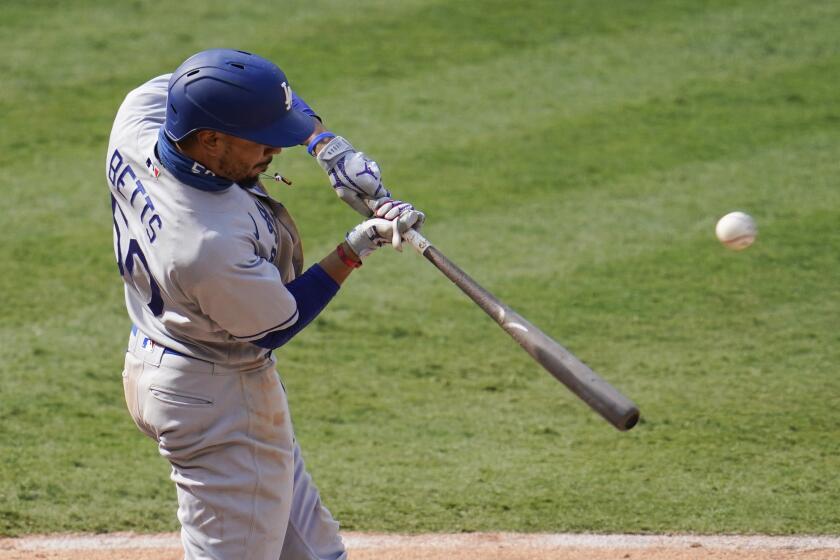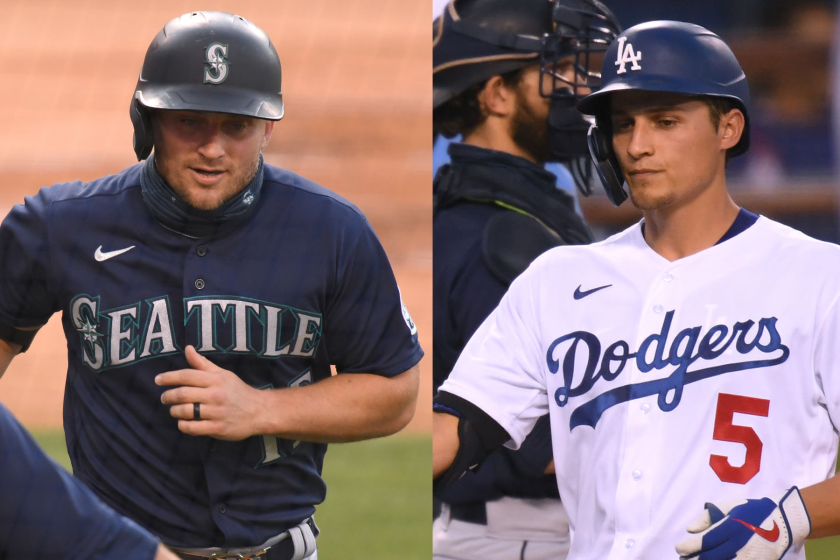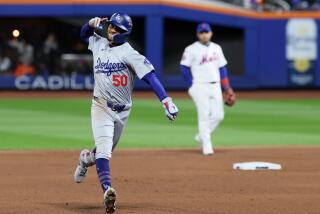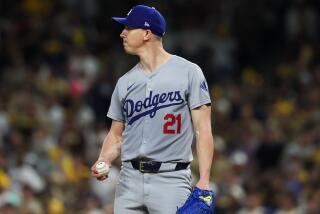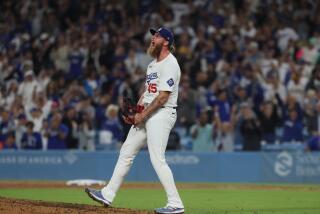Dodgers’ offense continues to thrive late in games and against right-handed pitching
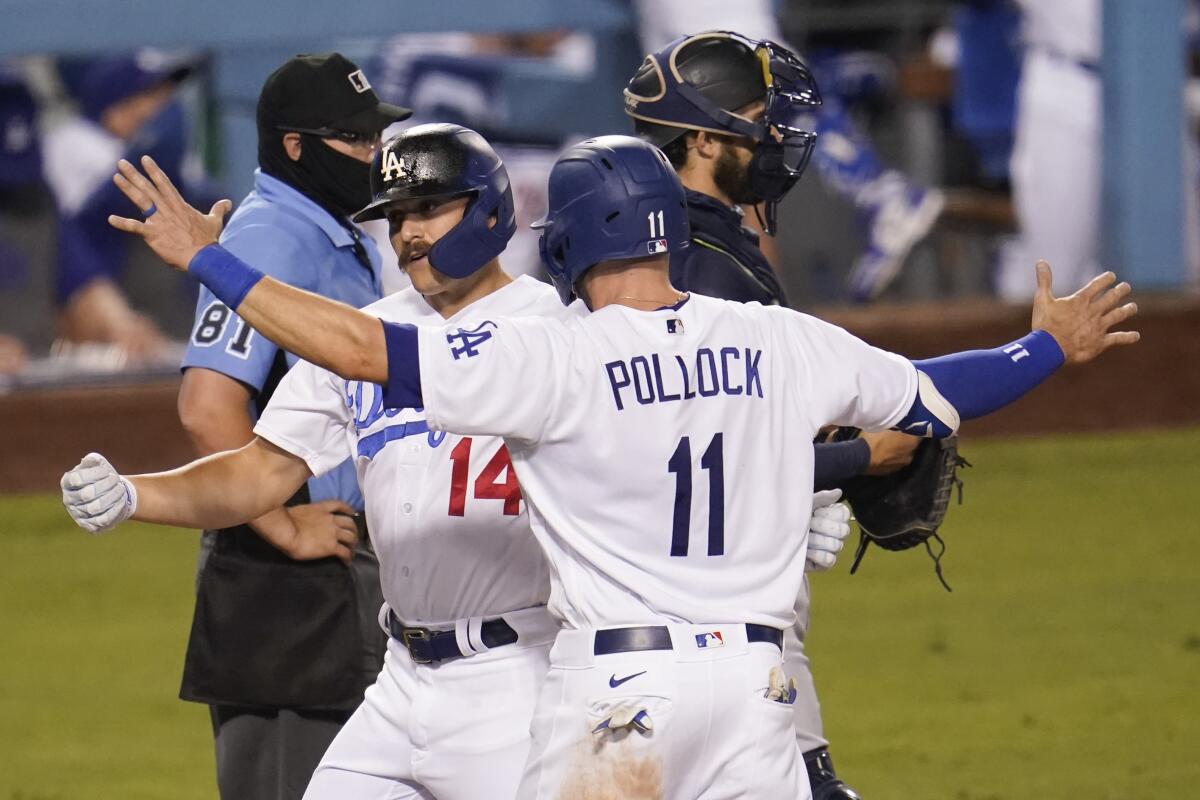
The odds were stacked against Seattle Mariners relievers Matt Magill and Dan Altavilla when they took the mound Monday and Tuesday night, respectively.
They both entered a close game in the late innings at Dodger Stadium and both are right-handed pitchers — conditions perfectly suited for this Dodgers offense to strike.
Of all the situations the team’s lineup has excelled this season, those are the two splits in which they’ve done the most damage. This two-game sweep of the Mariners was no exception.
A night after Magill was rocked in a decisive five-run seventh inning, Altavilla failed to keep Tuesday’s game tied in the eighth inning. With two out, Corey Seager delivered a run-scoring single that sent the Dodgers to a 2-1 victory, extending their winning streak to seven games and giving them the majors best record at 18-7.
Good news, Los Angeles. The Dodgers’ $365-million man Mookie Betts isn’t fool’s gold. He isn’t a well-made facsimile. He’s the genuine article.
“They feed off one another,” Dodgers manager Dave Roberts said, his club off to the franchise’s best 25-game start since 1983. “When they can continue to grind and swing at good pitches and put pressure on that reliever coming out of the ‘pen, good things are going to happen.”
There isn’t much this lineup can’t do. The Dodgers hit for power and get on base, entering Tuesday ranked second in the majors in slugging and eighth in on-base percentage. They can mix up the lineup and mix in their depth, having yet to field the same batting order in consecutive games. They draw walks and minimize strikeouts, ranking ninth in BB/K ratio. And, most of all, they manufacture runs, leading baseball with 141.
But their consistency in the late innings and against right-handed pitching has stood out over the season’s opening month.
The two coalesced again Tuesday. After being limited to one run by Mariners left-handed starter Marco Gonzales for seven innings, the Dodgers’ go-ahead eighth inning began with a one-out walk from Austin Barnes, who also recorded two hits Tuesday to match a career-high seven-game hitting streak and raise his batting average above .300.
Barnes moved into scoring position with a two-out steal, taking advantage of a Mariners infield that was shifted and playing deep. That allowed Seager to deliver the go-ahead hit in a full count, ensuring the Dodgers were victorious on a day that saw starter Tony Gonsolin throw six scoreless innings (he has yet to allow a run over 14⅔ innings) and reliever Blake Treinen earn his first save of the season.
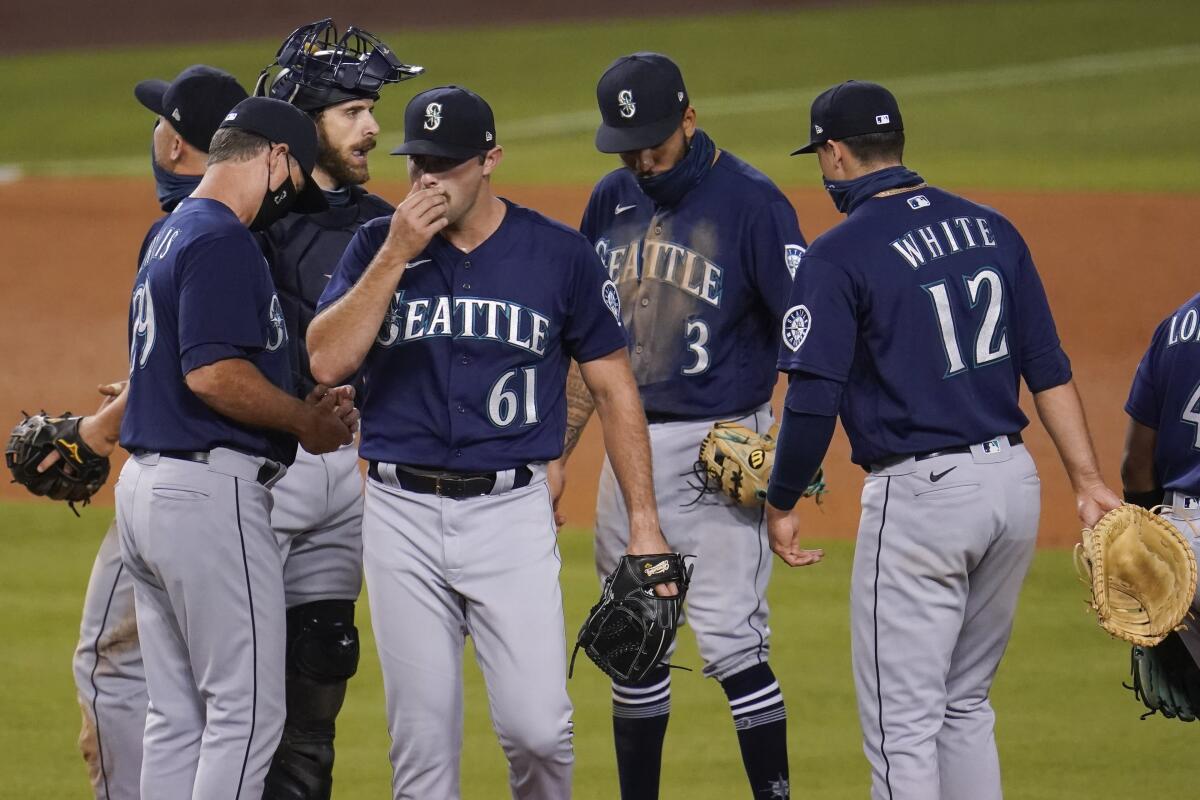
In the sixth inning of games or later (excluding extra innings), the Dodgers began Tuesday tied for second in the majors in scoring (43 runs) and were first in run differential (plus-32). Against right-handed pitching overall, they were first in runs (112), fourth in batting average (.262) and second in on-base-plus-slugging percentage (.839).
Though those trends continued Tuesday, Roberts has yet to pinpoint the reason behind either phenomenon.
Late-game offense long has been a strength of the Dodgers, especially after they won 12 games via walk-off last season, a byproduct perhaps best explained by their confidence in clutch situations.
“You look at the clubhouse, it’s a lot of the same cast of characters … that have won games and had big at-bats in big spots,” Roberts said. “I like to think the focus isn’t more dialed-in late in the games, but sometimes late in the game you just have to turn it up a tick more. Our guys do a good job at the end of the game.”
The differences between facing right-handers and left-handers — the Dodgers are far less effective against southpaws, with a .210 average entering Tuesday that ranked 27th in the majors— is even more surprising.
Corey Seager and his older brother Kyle, who plays on the Seattle Mariners, made history during the Dodgers’ 11-9 win on Monday.
“That’s interesting because our lefties, Max [Muncy] and Cody [Bellinger] and Joc [Pederson], have been struggling,” Roberts said, making reference to hitters all batting below .200. “I don’t know the logic or reasoning behind it.”
Though many of the team’s best hitters this season — notably, Mookie Betts, Justin Turner and AJ Pollock — swing from the right side, they’ve posted unusually strong reverse splits.
Betts is the most glaring example, hitting more than 200 points better against right-handers (.361) than left-handers (.130). All nine of his home runs have come against right-handers.
It’s paying off nevertheless. Almost 75% of the Dodgers’ plate appearances have come against right-handed pitching. Their late-game production, meanwhile, has helped them collect a big league-best 10 comeback wins.
“We’re relentless,” Seager said. “We’ve always been that way. We’ve never given at-bats away. We pass the baton, that next-man mentality. You can’t give them away even when it’s late. It’s almost more important to not give them away when it’s late. That’s a big thing we pride ourselves on, and we’ve done that for a long time now.”
More to Read
Are you a true-blue fan?
Get our Dodgers Dugout newsletter for insights, news and much more.
You may occasionally receive promotional content from the Los Angeles Times.

